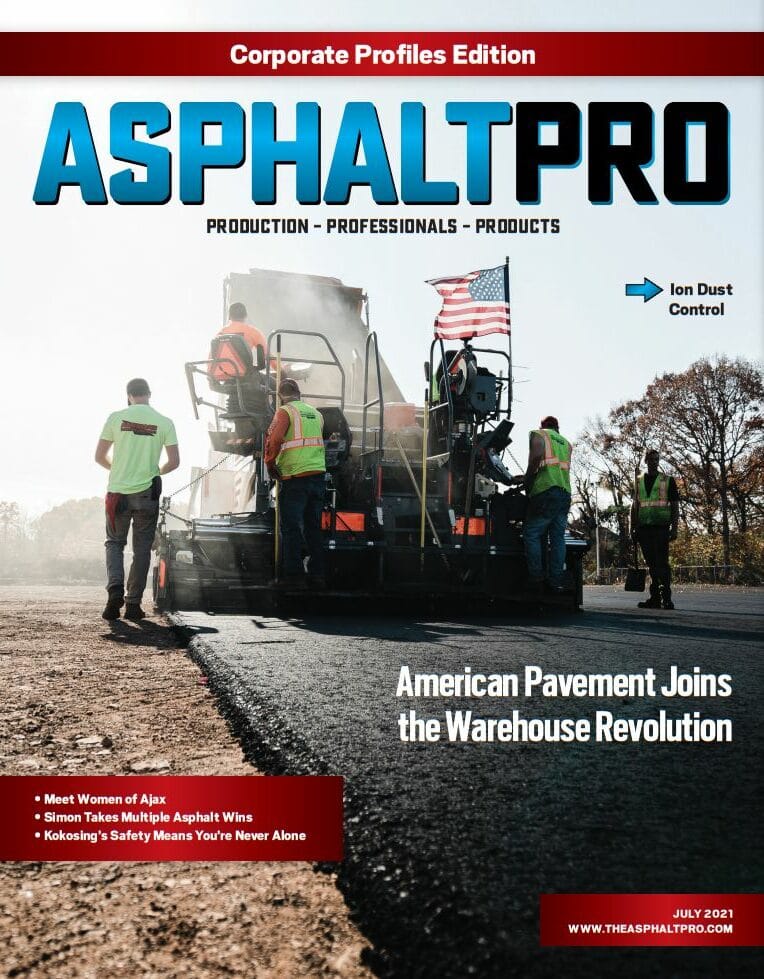
When people find themselves juggling too much debt, they need a strategy to get out from under the burden. Financial advisors suggest one pay off the credit card—or loan—with the lowest balance first. Then pay off the next-lowest-balance loan. And so on.
I see this happening globally with greenhouse gas (GHG) emissions and other issues. Globalists, donning the mantel of authority, have targeted the United States to lower its GHG emissions leaving the asphalt industry in this country to stare collectively at already low numbers. How much lower can they go?
It is a fact, reported in the National Asphalt Pavement Association’s 2001 Report to Members that “[e]missions from asphalt plants, including GHGs, are very low and well-controlled. Between 1970 and 1999, the asphalt industry decreased total emissions by 97% while increasing production by 250%.”
Consider those numbers. Increasing production more than 200% over a 30-year period should have increased emissions in any industry in any country, right? But not ours. The asphalt industry decreased total emissions by almost 100%. That’s commendable. GHG emission reduction has only improved in the 21 years since. We’ve paid our balance through such measures as improved baghouse technology, blue smoke capture controls, dust re-use measures, and low-NOx and ultra-low-NOx burners that we fine-tune like a concert violin.
As a conservationist, I applaud efforts to filter particulates of dubious nature out of our air and water. We all want a clean planet. There are few things as beautiful as a view of the Blue Ridge Mountains with their trees in full leaf or the Pacific Ocean where it meets the horizon about three minutes before sunset. Imposing further restrictions and regulations upon an industry that’s already done its part isn’t going to preserve those majestic views. What we need at this point in history is to educate the hysterical masses. We need to inform potential mayoral candidates in cities like Cleveland that the particulates they imagine asphalt plants pout into the environment are not the crisis.
Ignoring large polluters is the crisis.
The current Toxic Release Inventory (TRI) program from the Environmental Protection Agency (EPA) is one example of the “crisis think.” Despite EPA categorizations, political candidates and your local concerned parent think the nearby asphalt plant is toxic. We must take time out of our day jobs to explain to them that it’s not. According to the attorney NAPA engaged to review the TRI reporting obligations, “few asphalt mix plants are likely required to report under TRI.” If the phrasing “are likely required” sets you on edge, you can reach out to NAPA for help. The association will be issuing guidance for its membership shortly.
It’s laudable to continue striving toward better goals throughout our lives and careers. It’s even more laudable to set a goal of rooting out the tumor poisoning our planet. I have my opinion of which countries are to blame for many of our pollution problems—and it’s not the United States or her asphalt industry. Even if the North American asphalt industry were to reduce its GHG emissions to net zero by whatever arbitrary date the elitists set, our children can still choke to death on the poison drifting from a still-leaking Fukushima, the brine off the Salar de Atacama salt flat, or the apathetic Shanghai. The miniscule GHG emissions still present after all the scrubbing our industry does are nothing in comparison to the enormous balance coming from other parts of the globe. I think it’s time to tell the global elite to focus attention on the next-lowest-balance.
Stay safe,
Sandy Lender